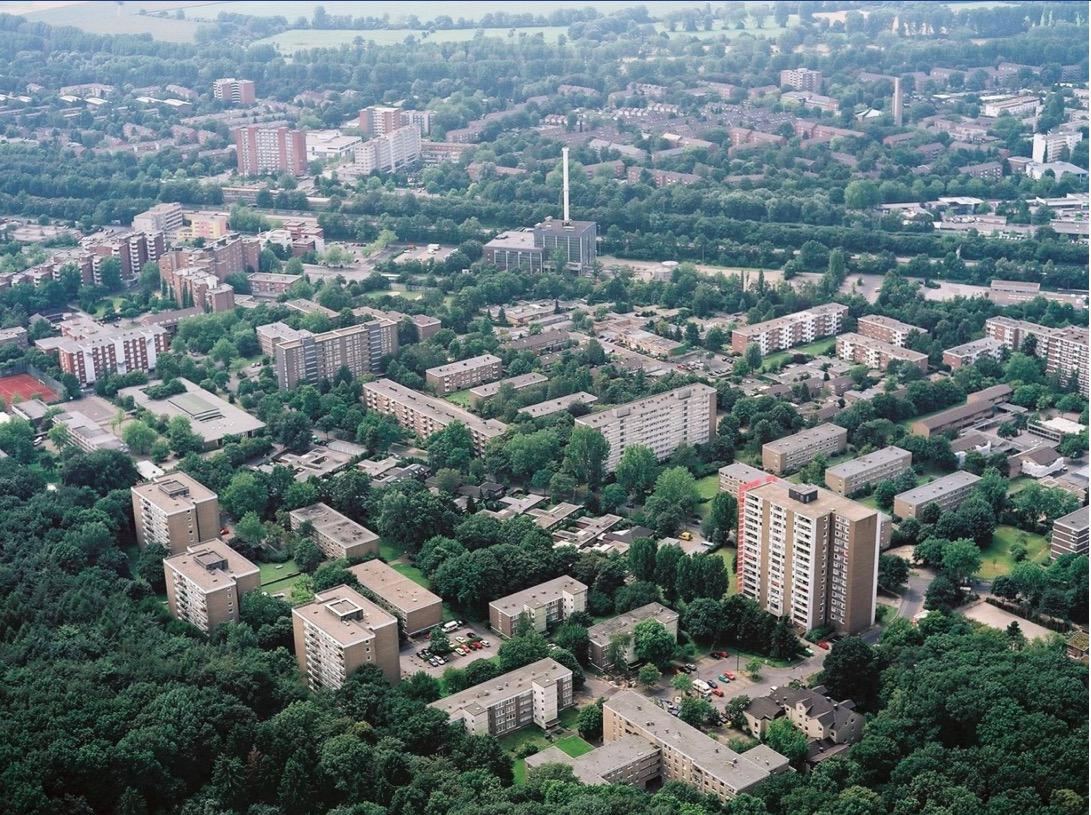GARATH 2.0, DUSSELDORF, GERMANY

PROJECT DESCRIPTION
Located in the southern part of Düsseldorf’s fringe, Garath is a typical housing project district of the 1960s and ’70s. Garath faces specific challenges: the district is home to 18,730 inhabitants, of whom 11% are unemployed, a higher proportion compared to Düsseldorf as a whole. Rents are below the city averageand the living space is often not adequate for today’s demands, which sometimes leads to a concentration of social problems. In addition, there are other urban deficits such as a patchy retail supply and a lack of attractive green and open spaces.
Envisioning
To develop a strategy for Garath, process management has been implemented focusing on participation of different stakeholders, especially the residents. The process has been developed within a year: Defining the roles of expert skills and knowledge: a high level steering committee (mayor, aldermen, head of offices), a working team (offices, external expertise), a local team (offices, stakeholders) and an advisory board (members of local council, stakeholders). A special feature of the Garath 2.0 project is the comprehensive participation of citizens, with different formats integrated into each planning step. Managing the transformation is only possible if the inhabitants are involved and support the change. Therefore, the residents have been included in the planning process right from the start. The participation formats aim at gaining the active cooperation of different sections of the population and different age groups and to involve them in the planning phases. This intensive participation fosters the network of initiatives already there and supports a better exchange.
Activating
Particularly noteworthy is Neighbourhood Branding, a project aimed at mapping a shared perception of the future of the neighbourhood. The residents specified what they saw as needs for action and development. To gain this information different kinds of participa-tion tools were used: a kick-off meeting, a community festival, neighbourhood talks, interviews with the mayor, aldermen, administration and stakeholders, a branding session, workshops and a future conference. Children and young people were also invited and involved. Based on this input 50 measures are planned in total. Some have already been put into action, others are now being planned.

Financing
Two Integrated Action Plans have been developed with some 50 measures, two-thirds of which will be funded by the Social City programme and by ‘Strong Neighbourhoods - Strong People’, a joint project of the European Regional Development Fund and the European Social Fund for disadvantaged areas.
LESSONS LEARNED / RESULTS
- Making the right effort really results into active participation by residents and a sense of belonging and community
- The approach of making also Garath profit of the growth of Dusseldorf is now being scaled up to the whole city into the integrated neighbourhood development plan
DATA
City information
Population size: 501 th - 1 mPopulation development dynamics within the city administrative limits (at the time of the project): Growing
Population development dynamics of the functional urban area (at the time of the project): Growing
Website of the city: https://www.duesseldorf.de
Project information
Project territorial scale:
NeighbourhoodProject geographical area: Periphery of the city
Project/building proportions: No data/not applicable; Project Area: Over 10 ha
Project main actors: City Government; Resident association, group, citizens; Investors, private businesses
Project dominant property ownership: Private
Project development stage (at the time of description): Just started
Project duration: No data/not applicable
Project starting date: 2015-2018



